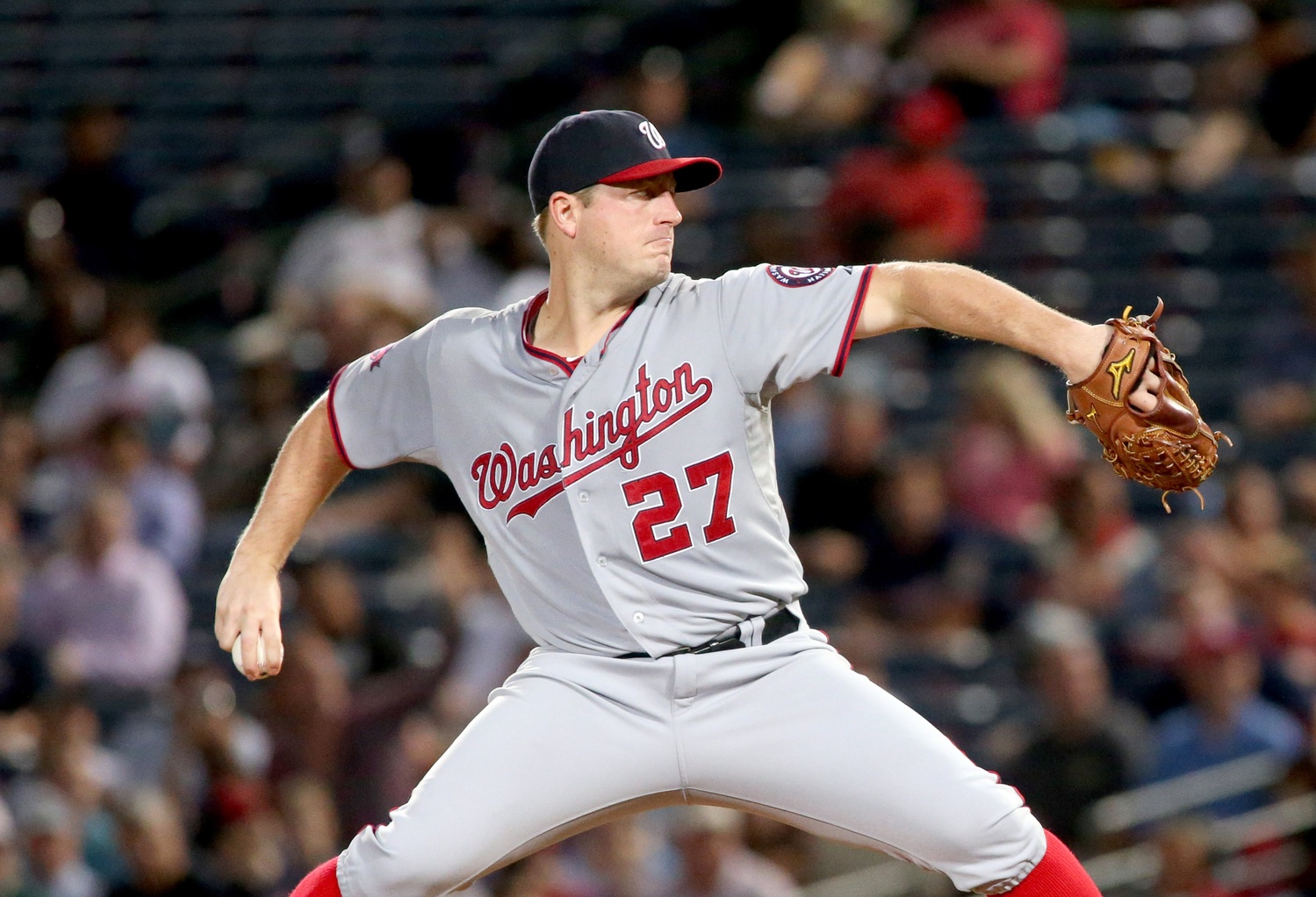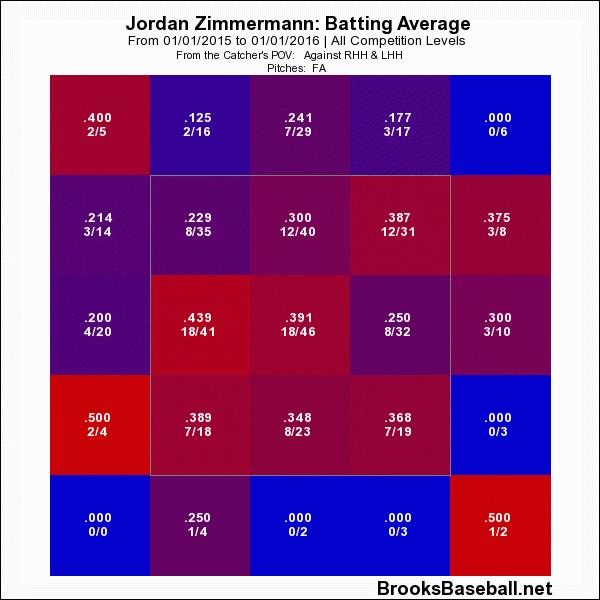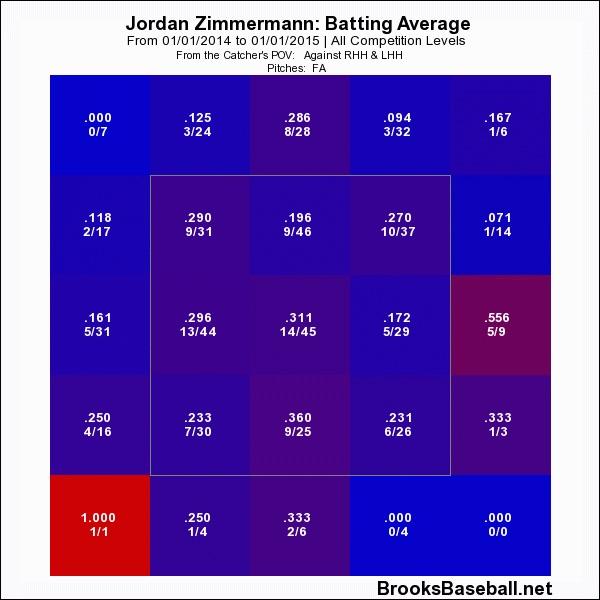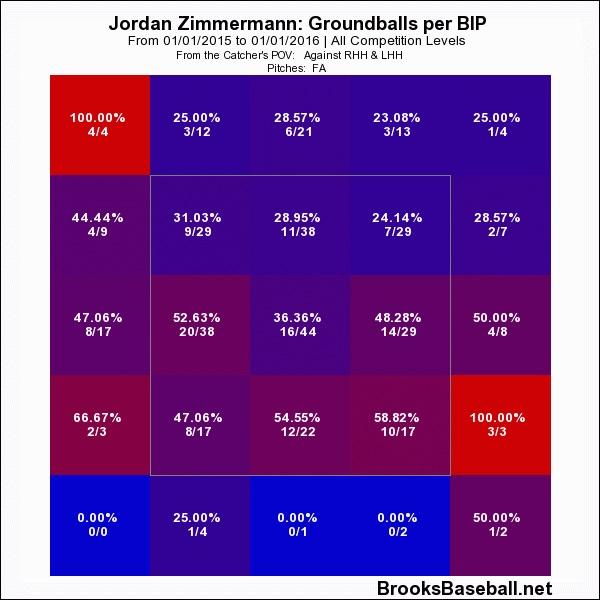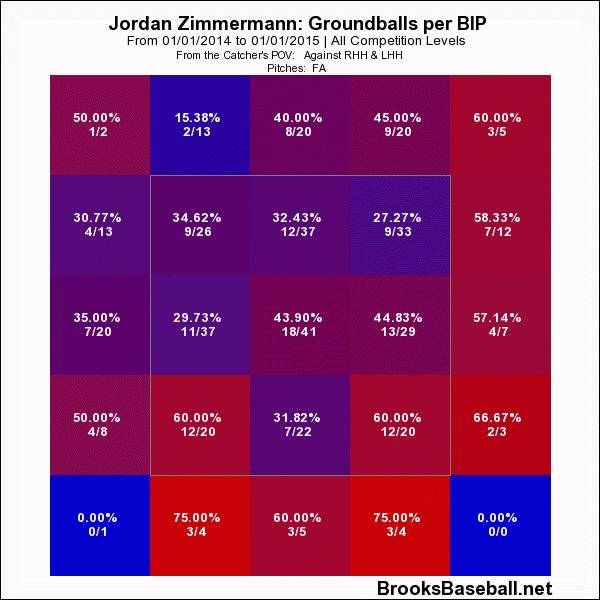Jordan Zimmermann
Position: Right-handed SP
2015 Stats: 201.0 IP, 19.7 K%, 4.7 BB%, 3.66 ERA, 4.12 DRA
How He Fits: The Cubs are well off in terms of their solid, top of the rotation type pitchers. While Jon Lester may not have been able to reach the hype bar that everyone had set for him in the offseason, he put up quality numbers, he stayed healthy (as he’s done throughout his career), and he gave his team a few very impressive months midseason to counter the poor ones—and those poor ones weren’t really as poor as many made them out to be. And Jake Arrieta is, well, Jake Arrieta. No explanation needed.
What the Cubs really need is to fill in the cracks that are left after the one and two spot, and thus create that oh-so-vital pitching depth. Jason Hammel was dominant in the first half, with a 2.86 ERA in 103 2/3 innings. However, he was unable to keep the momentum in the second half, posting a 5.10 ERA in just 67 innings. As Sahadev Sharma pointed out Thursday, whether this is a second-half downward trend that we saw occur last season or whether the calf injury he had right before the All-Star break affected him during the season’s final months remains to be seen. That’s a debate to be had at another date, but the fact is that right now it’s uncertain how Hammel will produce in 2016, and the Cubs are looking for a bit of certainty. With Zimmermann, certainty is what they’ll get.
After successfully recovering from Tommy John surgery in 2010 and not missing any significant time since, the righty has put up consistent numbers and innings, save for his innings limit upon returning to the rotation in 2011. Zimmermann posted his highest career ERA in 2015 at 3.66 (minimum 150 innings) but, as we know, ERA can have a lot of noise surrounding it, while other stats and numbers can give us a little more detail into how exactly a pitcher’s ERA got to where it’s at. Zimmermann’s FIP was 3.75 on the season, a touch higher than his ERA. That’s most likely due to the hike in home runs he saw in 2015, while also dropping his strikeout rate by a few points.
Zimmermann has usually maintained a sub-20 percent strikeout rate, save for the 2014 season (22.8 percent), mainly because he generates most of his outs via groundballs, posting a 42 percent groundball rate in 2015. He induces grounders via his breaking pitches, while generating whiffs on high fastballs and the sliders low and away to righties. He’s kept his walk rates extremely low—his 4.7 percent walk rate in 2015 was tied for fourth in the NL (fifth overall in the bigs) with Cy Young finalists Zack Greinke and Clayton Kershaw. Those are quite prestigious names to be among in a category with, especially one as important as total walk rate. Control of the strike zone is something that Zimmermann is able to offer consistently: he has never posted a walk rate higher than 5.3 percent in seasons with a minimum of 150 innings pitched in his career.
Zimmermann proved to be an innings eater in 2015—he only had eight outings on the year in which he threw less than six innings—and that’s something that the Cubs lacked at the back end of the rotation this season. Consistency and health are key for the Cubs rotation, and these are two elements that Zimmermann seems equipped to provide them with in 2016.
Why it Won’t Work: Now comes the ugly part. I paint a picture where Zimmermann seems to be the perfect man for the task the Cubs need accomplished, but let’s face it, as Arrieta proved to us in October, nobody is perfect, especially pitchers. Zimmermann’s main issue seems to be his increased home run rate in 2015. Coming from a neutral environment such as Nationals Park, which allowed an average 1.025 home runs in 2015, good for 14th in the majors (like I said, pretty neutral) and potentially moving to a home-run happy wind tunnel such as Wrigley Field, which was ranked third in average home runs allowed for 2015 with 1.276, could be a bad thing. This could be somewhat of a red flag.
As the league average home-run-to-flyball ratio settles somewhere around 10 percent, for Zimmermann to have put up a 10.9 percent rate in 2015 isn’t all that bad, though it looks alarming to the naked eye when compared to his 6.4 percent rate in 2014. However, a deeper look tells us that 2014 was most likely the outlier, in both home-run rate and overall performance. That season saw his career-best in both strikeout and home-run rate, leading to his best performance both ERA (2.66) and WARP (3.4). The jump in home runs last season was a career high and certainly is a bit of a concern as he moves to a park that’s more prone to the long ball, especially when the wind favors the batters.
Zimmermann has also lowered the usage of his fastball by nearly eight percent in 2015, while elevating use of his breaking pitches. Without speaking with Zimmermann, it’s hard to determine the exact reason why he chose to reduce his use of the fastball, but simply stated, it wasn’t as effective in 2015 as it was the year before.
Like night and day. The pitch is no longer generating as many groundballs as it did in 2014 either.
Zimmermann’s velocity has not seen a drastic drop (though there has been a fairly small one), so a health issue doesn’t seem likely to be a cause for concern. These are certainly legit concerns when deciding if the Cubs should offer Zimmermann a contract worth of a top-tier free-agent arm. However, we’ve seen pitching coach Chris Bosio work with Arrieta as he’s turned into a Cy Young candidate, rising from the ashes of whatever he was in Baltimore—so anything is possible.
Contract size and value could also be a concern for the Cubs in moving forward on a deal with Zimmermann. The former Nats righty may have not had his career-best season in 2015, but his numbers were still impressive, though he may rank as a second-tier arm under the likes of Zack Greinke, David Price, and arguably even Johnny Cueto. Zimmermann will likely be looking to sign something along the lines of a five or six year deal, in the $100-plus million range, and I’m not sure if that would be something the Cubs want to pursue while also losing a draft pick due to the fact that Zimmermann was offered (and rejected) a qualifying offer. Then again, in terms of the all mighty dollar, the free agent pitcher market has historically been over inflated and that isn’t likely to change, as Brett Taylor pointed out over at Bleacher Nation. It’s just about choosing which candidate is worth the extra dollars you’re going to pay, and who will yield the best return on said contract in the immediate future.
Overall, Zimmermann could be a viable man for the task, but in my opinion, only at the proper price, market inflation included.
Lead photo courtesy of Jason Getz-USA TODAY Sports
